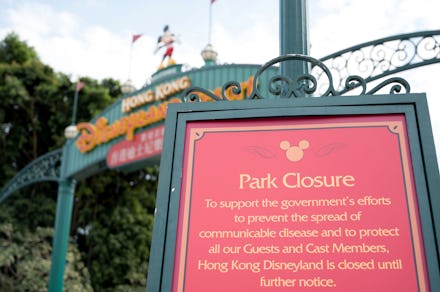The dark side of isolating people to avoid the spread of disease

The new coronavirus outbreak that started in China is growing at a startling rate, making more than 17,000 sick, and killing more than 360, STAT reports. For now, public health officials say the virus poses little danger in the US — where there have been 11 cases to date, including two cases of human-to-human spread — but if they observe sustained transmission between people, they may need to implement what are known as “social distancing” measures to help contain the outbreak.
Social distancing refers to efforts to limit where and when people come together in order to curb disease transmission. These can include closing down schools and public transit, encouraging employees to work from home, canceling large public gatherings, and even shuttering regional borders. But deciding whether to implement such measures is a complicated balancing act, STAT explains, since their toll can outweigh those of the disease itself.
Public health officials in the US have already begun preparing to potentially enact more drastic social distancing measures. Last week, all 195 of the American citizens evacuated from Wuhan, China, thought to be the origin of the outbreak, were quarantined. The federal government declared a public health emergency on January 31, allowing it to temporarily prohibit the entry of foreign nationals into the US via China. Several airports have also begun screening passengers for possible infection.
Taking larger-scale social distancing measures here in the US probably won’t be necessary, unless infections surface so fast that a municipality or hospital can’t keep up, a situation known as sustained community transmission, Ashish Jha, a public health researcher at the Harvard T.H. Chan School of Public Health, told STAT. The emergence of the virus in schools and daycare, where many viruses are routinely spread, could also signal a need for greater social distancing.
Social distancing may seem like a surefire way to prevent disease spread, but it can come at a steep cost. Not only isn’t there strong data supporting its effectiveness, Jha noted, but large-scale quarantining would disrupt travel, trade, and other functions crucial to a globalized society, making it hugely expensive. “We could look at another major recession if people overreact to this outbreak, and that’ll hurt a lot more people in the long run than this disease might,” Nicholas Evans, a bioethicist at the University of Massachusetts in Lowell, told STAT. Quarantining, which involves confining infected people with each other, may also spur more cases of infection, he added. Long stretches of isolation from the outside world would also feel incredibly lonely and just downright terrible.
Large-scale quarantining would disrupt travel, trade, and other functions crucial to a globalized society, making it hugely expensive.
Plus, research on the 2009 H1N1 flu pandemic suggests that travel bans don’t work. A study published in 2011 found that prohibiting travel to and from Mexico didn’t help to keep the H1N1 virus at bay. Major social distancing measures could also cause widespread panic, Jha notes. Indeed, China’s quarantine of tens of millions of people has already drawn concern and skepticism.
“Fear and misinformation can be more harmful than the virus we are fighting against,” Oxiris Barbot, the public health commissioner for New York City, told STAT. Whether or not public health officials implement large-scale social distancing measures, maintaining open communication with the public, including explaining the rationale behind certain directives, will pay off in the long run.